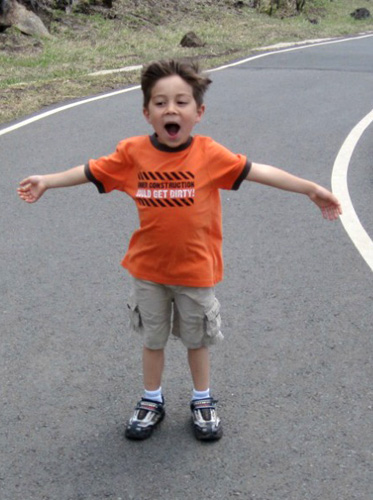Learning About Weather in Your Own Backyard
This post is by regular contributor Debi Huang of Go Explore Nature.
My 8 year old received a weather station this past Christmas and promptly began begging us to set it up. It took us awhile, but we finally did it – just in time to be able to put the rain gauge it came with to good use.
Although our store bought weather station works great, you don’t even need that to help kids learn about weather right in your own backyard.
With young kids, learning about the weather starts with something as basic as looking outside and observing the sky. Just paying attention is a great first step! Older kids may enjoy simple experiments and tracking weather – both of which can be done quite easily in your yard. Here are a few ideas for doing just that.
Temperature
One of the simplest ways to learn about the weather is to track temperature. All it takes is a thermometer. Kids can chart the temperature and compare the difference between temperatures in the morning, afternoon and evening – or even in different places in your yard.
Rain
Kids can measure rain levels by making a simple, recycled rain gauge. All you need is an empty, clear plastic bottle (larger ones work better). Cut off the top of the bottle for an opening. Then measure out several levels and use a permanent marker to indicate them on the outside of the bottle.
Place the gauge outside in an open area away from trees and branches. If you’re concerned it might blow over, attach it to a wooden stake and wedge it into dirt.
Check your rain gauge after it rains. You can record the readings if you like. Then empty the gauge so you’ll be ready to measure the next rainfall.
Wind
Wind is air in motion. It’s easy enough for kids to feel and hear, and sometimes even to see.
Kids can feel the wind by spreading their arms out and trying to push against it. You can hear the wind by listening to it howl, and lighter winds can be heard by hanging wind chimes. You can see the wind when trees blow. You can also place a pinwheel in your garden and when the wind blows, you’ll be to see which way the wind is blowing.
Sun
Learning about the sun starts by comparing the temperature on a warm day in the shade with a spot in the sun. Which is warmer and by how much?
Shadow experiments are another fun way to learn more about the sun. Place a piece of paper on the ground in a sunny part of your yard. Put an object on top and trace the object’s shadow. Come back a little later and trace the object’s shadow again. Repeat one more time. What happens to the shadow over time? Why?
Clouds
Do your kids like playing the cloud watching game? Watching clouds is the best way to begin to learn more about them. Kids can even draw or paint the clouds they see from one day to the next. On cloudy days, take temperatures throughout the day. Is there a connection between the way clouds look and the temperature?
Snow
If you’re lucky enough to have snowfall where you live, there are plenty of ways to learn more about it. Simple measurements with a ruler can tell you how much snow is on the ground. Place the thermometer in the snow to determine the temperature.
If your kids like catching snowflakes on their tongue, this will be fun: Catch some snowflakes on a sheet of black paper. Then look at them under the magnifying glass. How are they alike? Different?
How do you learn about weather in your yard?
Related Posts
- 9 Ways to Encourage Indoor Kids to Play Outdoors
- Planning a Playful Garden: Plants That Are Perfect for Play
- Responding to Children’s Spontaneous Experimentation



Great post Debi, we like to observe the weather…. mainly wind and clouds. I love the idea of setting up a rain gauge, the kids would love that.
I’m so glad to hear you enjoy noticing the weather, too. A simple rain gauge can be loads of fun – and a great intro to measuring & record keeping for little ones.
Great ideas- as always. We’ve done rain and snow gauges, but not much more. Of course, we are always checking the temps and winds before heading out the door so we know what to wear 🙂
I imagine you’d have a fairly close relationship with changes in the weather, Mel. Even though we don’t have extremes here, we try to pay attention to subtle differences from one day to the next. You’re right – it’s a great way to help the kids plan what to wear. 🙂